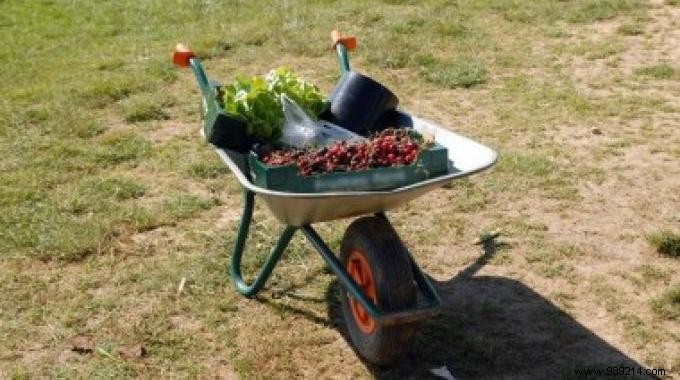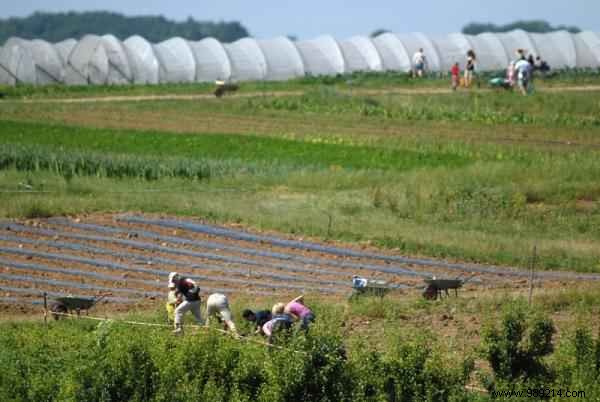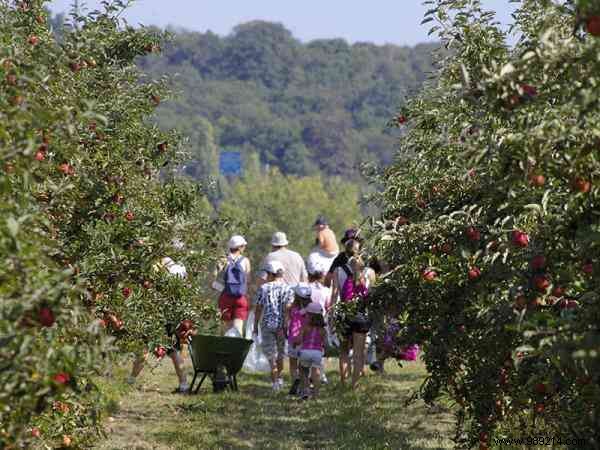
Looking to eat better and save money?
To save money and enjoy fresh produce, you can choose to pick your own flowers, fruits and vegetables directly from the farm.
The price per kilo much more advantageous than in supermarkets. And it's much more user-friendly!
Picking farms offer a wide range of local products, seasonal fruits and vegetables , at a lower price than in shops.
We can thus eat better, locally and for less. Discover the 3 advantages of picking. For sure, you will adopt it!

You have access to a wide choice of fruits and vegetables from the region , freshly picked, to the delight of locavores, these new consumers who are looking for local products.
For those in a hurry, those who cannot indulge in the pleasure of picking, the farms provide seasonal baskets, at the price announced in advance (at the farm shop).
Farms generally offer flowers suited to the region. On All Saints Day, you can harvest chrysanthemums.
Most farms also have a shop selling artisanal preserves, jams and terrines for the greediest.
Finally, others also offer meat, or even laying hens.
Indeed, the prices practiced in the pickings are much more interesting than those of the classic circuits where there are more intermediaries and packaging costs.
The prices being most often degressive , picking is more interesting when you group your purchases with relatives or if you buy in bulk to freeze or preserve.
Some examples:
- Red meat is sold between 10 and 20 € per kilo, depending on the quantity ordered, while in supermarkets the meat is worth up to 30 € per kilo.
- 20 tulips are currently worth €6 to pick up against double at a florist.
- The same goes for fruits and vegetables, they are generally 25 to 50% cheaper at the farm compared to the big brands.
- In season, asparagus is worth less than €6 per kilo, compared to €7 at greengrocers and €8 in supermarkets.
A tip :
Some farms sell the packaging, I bring my own containers (jars, basins, baskets...) to save even more.
In addition to the savings made, picking up allows you to have a good time outdoors with family or friends. Ideal on vacation!
This is the time to introduce toddlers to the joys of agriculture. The farmers are present to give explanations on the culture, the seasonal species, their know-how...
For an additional fee, some farms also organize workshops "preserves" or "kitchen".

Good news for city dwellers, farms practicing picking are more and more numerous and accessible near major cities .
I tried several sites, this one or that one. But they are not always complete. In order to find the ideal farm near your home, do not hesitate to consult the Yellow Pages or use a search engine, indicating for example:picking at the farm + your region.
As the terms of payment are different from one farm to another, it is best to consult the site or get in touch by phone .
There are many variations from one farm to another:some farms require an entrance fee, others do not offer packaging and, finally, all are dependent on weather conditions and possible unforeseen events.
So that my picking goes as well as possible, and not to explode my budget with unforeseen expenses, I check a few points, on the farm's website or by phone:

1. Which means of payment are accepted?
2. Is there an entrance fee?
3. What are the commodity prices? Please note that they vary and are therefore not always available on the Internet,
4. Is there a craft shop? I plan my budget this way, because I might be tempted to bring back some canned goods!
5. Are there animations or other paid workshops?
6. If I bring my packaging, I remember to weigh them beforehand so that I can deduct their weight when weighing and paying.
1. The harvest calendar, in order to know if the vegetables offered are suitable for me.
2. The opening of the farm on the dates chosen.
3. The existence of a carpooling system to access the farm, as some sites provide for it. Consumers can thus travel together and for less.
The farm provides the necessary equipment (wheelbarrows, secateurs, etc.), the consum'actors only have to harvest and weigh!
At this time, we return the loaned equipment and we pay what we have collected.